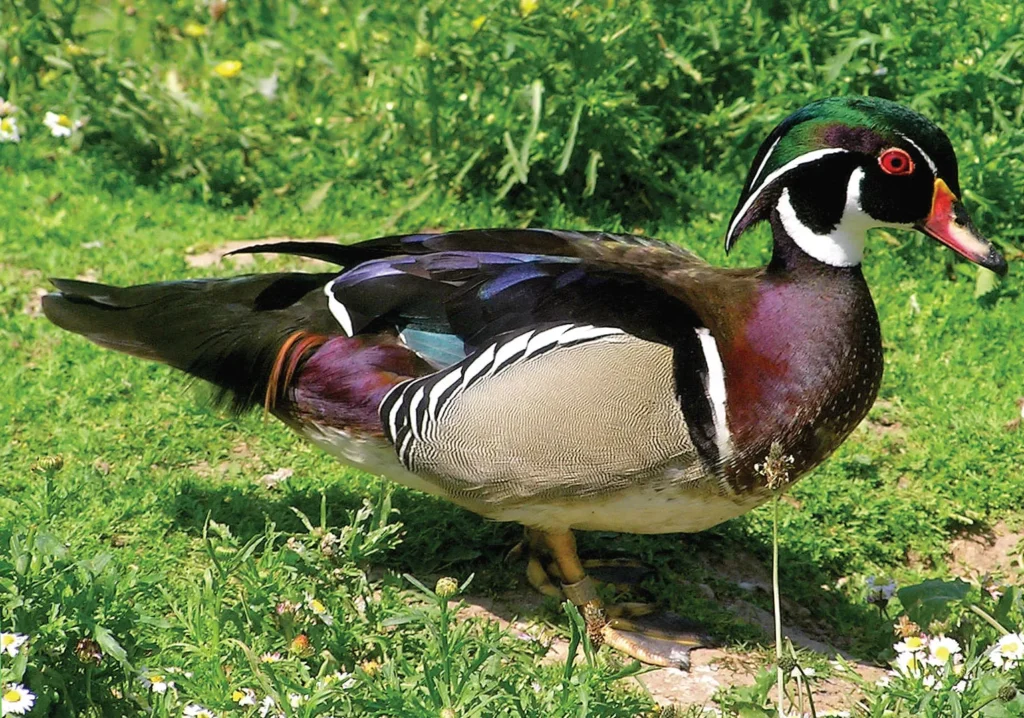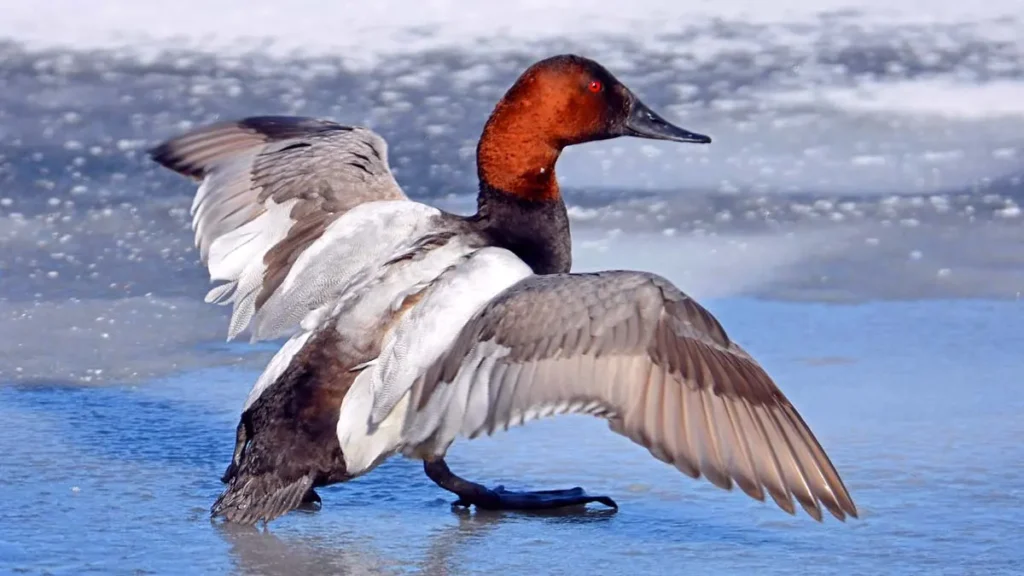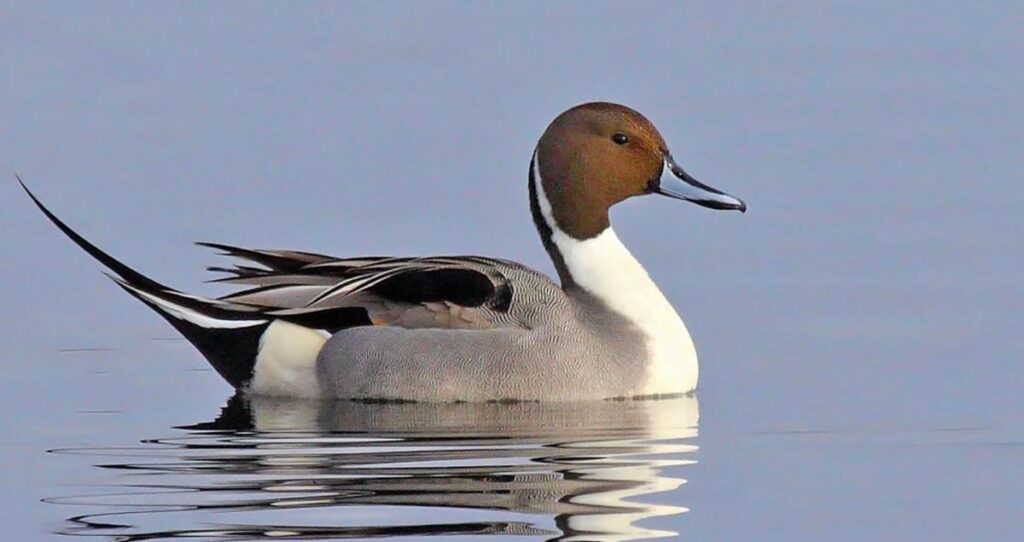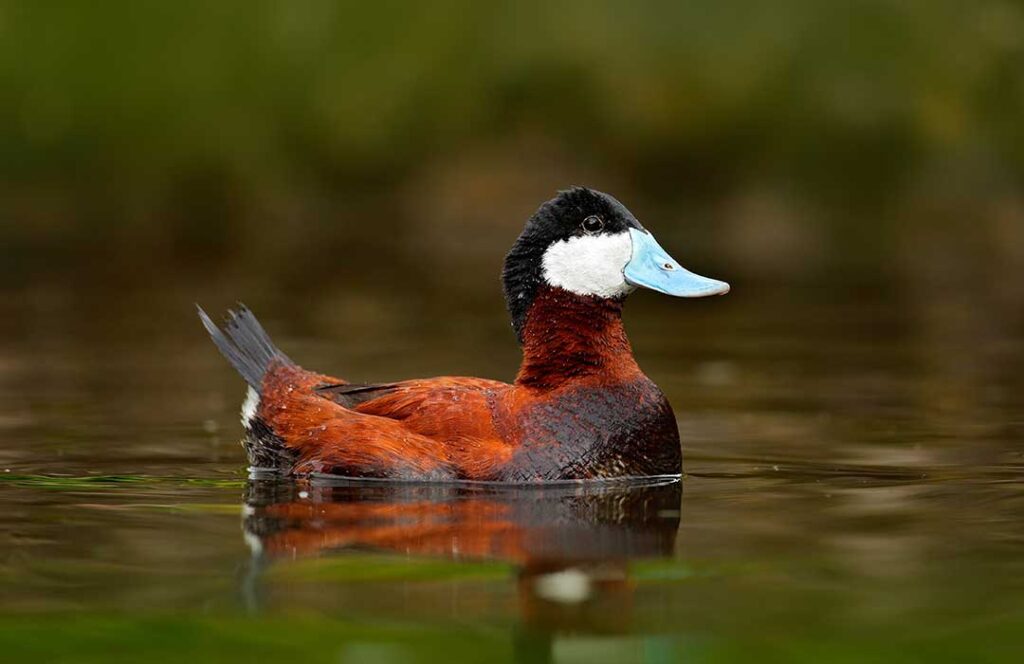Ducks are some of nature’s most enchanting creatures, seamlessly blending beauty, adaptability, and charm. Whether you’ve seen them paddling gracefully across serene ponds or flying in their iconic V-formation during migration, ducks captivate bird enthusiasts and casual observers alike. But did you know there are over 120 unique duck species worldwide, each with its own stunning characteristics and ecological significance?
Today, we’ll explore five incredible duck species that showcase the diversity, beauty, and quirks of this beloved waterfowl. From the vibrant Mallard to the shy Canvasback, each species holds a special place in our ecosystems. By the end of this guide, you’ll have a newfound appreciation for these remarkable birds and maybe even a spark of curiosity to protect them.
The Mallard Duck

Description
The Mallard (Anas platyrhynchos) is arguably the most iconic and recognizable duck species, often serving as the poster bird for all ducks. Males are easily identified by their iridescent green heads, bright yellow bills, and characteristic white neck ring, while females are cloaked in a mottled brown pattern for better camouflage. These medium-sized ducks typically range from 20–26 inches in length with a wingspan of about 32–37 inches. Mallards thrive in a variety of habitats, including wetlands, ponds, rivers, and even urban environments.
Behavior
Mallards are incredibly social and exhibit fascinating behaviors, especially during mating season. Males perform elaborate courtship displays to attract females, including head-bobbing and synchronized movement. Their adaptability is remarkable, as they migrate long distances to find suitable breeding grounds. Additionally, Mallards are opportunistic eaters, feasting on plants, insects, and small aquatic animals.
Conservation Status
Fortunately, Mallards are among the least concerned species when it comes to conservation. With their large global population and adaptive nature, they thrive worldwide. However, threats like habitat loss and pollution remain ongoing concerns.
The Wood Duck

Description
Few ducks rival the stunning appearance of the Wood Duck (Aix sponsa). Their vibrant plumage is a painter’s dream, with glossy green heads, bold white stripes, and a myriad of colorful accents on their bodies. Wood Ducks primarily inhabit wooded wetlands, swamps, and rivers, making their name perfectly fitting.
Behavior
Unlike most ducks, Wood Ducks are known for nesting in tree cavities, a unique behavior among waterfowl. Females often search for spots high up in mature forests near water, sometimes using artificial nest boxes provided by conservationists. These birds are also excellent flyers, darting gracefully through forests at high speeds. Their diet features a mix of seeds, acorns, and aquatic plants.
Conservation Status
Once teetering on the brink of extinction in the early 20th century due to habitat loss and hunting, the Wood Duck has made a spectacular recovery thanks to conservation efforts. Today, the species is thriving, a testament to the power of dedicated protection measures.
The Canvasback

Description
The Canvasback (Aythya valisineria) is a true masterpiece of nature, named after its pale, canvas-like back. Males boast a striking profile with red eyes, a chestnut-red head, and black chest, while females display subtler shades of brown. These elegant ducks favor large, open water areas, including lakes, marshes, and bays.
Behavior
Canvasbacks are expert divers, known for submerging themselves deep underwater to forage for aquatic plants. They are also impressive travelers, with migration routes stretching from North America to Central America. Their social dynamics often involve forming large flocks during winter months, offering birdwatchers breathtaking spectacles.
Conservation Status
Despite stable population levels, the Canvasback faces ongoing challenges from habitat degradation and climate change. Conservation initiatives focused on wetland preservation are critical to their long-term survival.
The Northern Pintail

Description
The Northern Pintail (Anas acuta) is the embodiment of elegance, with its long, slender neck and pointed tail feathers that lend this species its name. Males are particularly striking, boasting chocolate-brown heads, white chests, and a sleek black-and-white tail. Northern Pintails prefer open wetlands, prairies, and shallow lakes.
Behavior
Known for their graceful demeanor, Northern Pintails engage in elaborate courtship displays that highlight their agility and beauty. They are also one of the world’s most migratory duck species, traveling vast distances across continents. Their diet primarily consists of seeds, grains, and aquatic vegetation.
Conservation Status
Although Northern Pintails are widespread, their populations are declining due to habitat destruction and changes in agricultural practices. Conservationists are working to address these issues, focusing on restoring critical wetland habitats.
The Ruddy Duck

Description
The Ruddy Duck (Oxyura jamaicensis) is a small yet charismatic species known for its comical appearance. During breeding season, males display bright blue bills, chestnut-brown bodies, and a white face, while females sport subtler grayish-brown plumage. They are often spotted in marshes, ponds, and reservoirs.
Behavior
Ruddy Ducks are renowned for their quirky courtship displays, which involve males slapping their chest with their bills to create bubbling water noises. They are also highly territorial, often engaging in aggressive behavior to defend their nesting sites. Their diet consists mainly of aquatic invertebrates and seeds.
Conservation Status
While the Ruddy Duck population is stable in North America, it has become an invasive concern in Europe, where it threatens native duck species. Conservationists are taking measures to control their spread in non-native regions.
Comparison at a Glance
| Duck Species | Size | Primary Habitat | Diet | Conservation Status |
|---|---|---|---|---|
| Mallard | Medium (20–26″) | Wetlands, urban areas | Plants, insects, small animals | Least Concern |
| Wood Duck | Small (19–21″) | Wooded wetlands, rivers | Seeds, acorns, aquatic plants | Stable (recovering) |
| Canvasback | Medium (19–24″) | Lakes, marshes, bays | Aquatic plants | Stable (with threats) |
| Northern Pintail | Medium (20–30″) | Wetlands, prairies | Seeds, grains, vegetation | Declining |
| Ruddy Duck | Small (13–17″) | Marshes, ponds, reservoirs | Aquatic invertebrates, seeds | Stable (invasive in Europe) |
People Also Ask About Ducks
What is the most common type of duck?
The Mallard is the most common duck species worldwide, thanks to its adaptability and widespread distribution.
Where do ducks typically live?
Ducks inhabit a variety of environments, including wetlands, lakes, rivers, swamps, and even urban parks.
What do ducks eat in the wild?
Ducks have diverse diets, feeding on seeds, aquatic plants, insects, small fish, and other water organisms.
How long do ducks usually live?
On average, ducks live between 5 to 10 years in the wild, though some species survive much longer in protected environments.
Supporting Our Feathered Friends
From the vibrant Mallard to the bold Ruddy Duck, these five species remind us of the beauty and diversity of the natural world. Each duck plays a vital role in its ecosystem, whether it’s maintaining aquatic habitats, providing food for predators, or simply bringing joy to those who watch them.
If you’re inspired by these incredible ducks, consider supporting conservation efforts that protect their habitats and ensure their survival. Together, we can make a difference for these remarkable birds and the environments they call home.
Share your favorite duck species with us in the comments below or on social media, and don’t forget to keep exploring the wonderful world of waterfowl!


